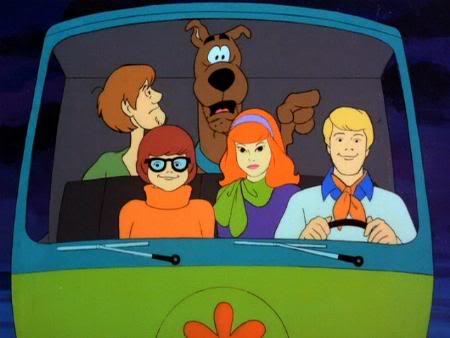I’m 25 and I don’t have a drivers license. I mean, I’ve never really felt the need to go and get one. Public transport is usually the fastest option where I live, and it takes a lot less responsibility to use it.
But most people would still prefer driving, rather than using the public T. Why?
I live out in a (relatively speaking) smaller city in Texas. We don’t have public transportation here.
Also, I like to be able to do things on my own schedule. A long time ago I lived in a city with a bus presence and had to take the bus when my car broke down and it took several hours longer round trip than I would have been able to do what I needed to do in my car.
Public transportation (the buses at least) takes twice as long as a bicycle where I live and bicycling takes twice as long as a car. That’s it, that’s why I still drive a car. Also it’s really difficult to move my kid and her stuff 10 miles to school.
@clueless_stoner I think if you live in the US. You don’t have a choice. US kinda shot itself on the foot when they invested in car infrastructure instead of improving/sustaining their public transport back in 1900s. Now it impossible to get around the US without a car. And we keep consistently screwing over any attempts of a decent public transport infrastructure
I’ve long been calling cars the Swiss army knifes of transportation. Those knives objectively suck for most usecases. Sure, there is a little saw on there, but you’re not going to cut a tree with it. Similarly most dedicated tools will be better than their eqivalent on the multitool. But that’s not the point of a Swiss army knife. The little red tool is everything at once, removing the need to decide what to bring.
Cars work in similar ways. They are inefficient, loud and bad for everybody’s health, including the planets. But they are also your all in one. Want to haul stuff? Cars. It’s raining and you don’t want to get wet? Cars. And so on and so forth. Each of this usecases has better alternatives (public transport, cargo bike etc) but none of these serve all usecases at once.
The car therefore promotes intellectual laziness. Driving a car means not having to think about the best way, because the car always provides a way. And city design often helps with that. The extreme is North America, but other places are not free from this.
Public transport rarely being door to door adds to this. You have to actually think about where the stations are in relation to your destination. Searching for parking is similar but people frequently don’t think of it as being part of the driving experience.
And then there are additional reasons, that are less stupid. I’ve been told, that some people for example that some people don’t feel save taking transit, especially those of minorities. The car provides a level of isolation.
Also social stigma (I would classify that reason as stupid though)
In the US and my city unfortunately public transit takes some time. My local transit system has had a hard time keeping up with maintenance of their E-hybrid busses and has busses out of service more often than not. This causes many trips to be overwhelmed with double the amount of people they would usually take.
In addition to lack luster infrastructure, you can experience safety concerns with some members of the public. I was personally followed all the way to my old job once and had to tell my manager “A crazy man followed me here, if he comes in the store call the police because I will remove him”
Despite these downfalls public transit becomes much more useful when combined with a bicycle. I can take the bus to the shops and ride back because most of the return trip is downhill.
When I owned a car I would often choose the bus with bike over my own car because then I wouldn’t have to worry about parking.
In my city, it’s not out of the ordinary to look upwards of 40 minutes for a spot. I used to have to park 20 minutes away in the hills then skate back. Otherwise I’d be doing laps around my neighborhood trying to find ANY legal parking.
I can definitely understand why some members of the public prefer cars over public transit just for safety.
I’m not a little guy by any means, I’m 190 pounds of muscle and have some facial scarring. I’ve been described as “scary” and “You look like the devil” but I have had a number of run ins that made me fear for my safety.
If I was a 4"5 mom I would almost exclusively drive.
Public transport is usually the fastest option where I live, and it takes a lot less responsibility to use it.
This is… not true in a lot of places.
Austin, TX. Takes me maybe half an hour to get across town in my car. Would take me two hours and three transfers to do the same by bus. Not saying the bus is bad by any means, just that the infrastructure isn’t built for public transport.
I always feel like these posts come from people who’ve only ever lived in a city. I’d love to catch a bus sometimes but I’d have to bike an hour to the nearest stop and even then it likely won’t stop where I need to go. In some parts of the US at least, it’s literally impossible to only use public transportation. So you buy a car and if you move somewhere with good public transportation…you’ve already got a car and are used to the freedom anyway
Also the US is very large geographically so if you have to travel often it makes far more financial sense (not to mention saves a lot of time) to get a car
Shorter commute time and privacy. I already have a car and I HATE lugging my groceries around on the bus.
- Music
- The people (not everyone of course but you know what type of people I mean)
The majority of housing in the USA requires a car. The nearest public transport option for me is 40 miles away.
If I did live in a city I would prefer to live near where I worked and shopped. Then I could get by without a car day-to-day, but would still want the freedom of a car for road trips.
Public transportation is not a viable option where I live.
Besides, a car takes me exactly where I want when I want.Are you confused as to why people would prefer to be in charge of their own transportation and set their own schedule instead of being at the whims of whatever forces that might cause buses & trains to be delayed, cancelled, rerouted, full, etc.?
When I lived in a city with good transit, biking and then taking the bus was more reliable than driving to work. Driving puts you at the whims of traffic and construction, some of which may or may not be forecastable.
Did you live in one of those cities where they had the flying buses? Because otherwise you’re just as much, if not more, at the whim of traffic and construction on a bus. A car will always be faster and more reliable than a bus. subways and local trains usually only beat cars because they’re often on a closed loop where they don’t have to stop. Plenty of trains have issues though, like the city I used to live in who shut down the trains downtown every single holiday weekend (downtown was the transfer point). A bike might be reliable on short distances where there is heavy traffic if you have dedicated bike lanes where you can avoid that traffic.
The problem comes if your city doesn’t have total subway coverage and you have to take a bus to a subway, take a subway, take a bus from the subway, driving will always win.
Bus rapid transit is a thing, as are bus lanes. It’s cool! No flying buses necessary.
Bus rapid transit and bus lanes are not universal and even if a city has them it doesn’t mean they have them on every single street. There have been times where public transportation has made sense for me. I lived in a city where I was on the same block as the train station and my place of work was a 5 minute walk from the destination station. Great, I took the train everyday.
The next job was a 25km drive, which took around 20-25 minutes in a car, and if I’d taken public transportation it would have been 1.5 hours each way. Most people fall into the latter type of situation which is why cars are so popular. Public transportation tends to fall apart as soon as you start adding in transfers. Buses/trains usually don’t perfectly line up so every time you have to transfer, you add in a significant amount of time, and neither of them are direct so when you combine inefficient routes with things like waiting time cars almost always make more sense.
Biking can quite often take you around traffic; in some cities, there are bus lanes that allow them to go around traffic too. Even just the ability to get off the bike and walk it up a one-way street can sometimes get you around some annoying obstacles.
Though it was hardly scientific, Top Gear once raced a car against three other forms of transit, the key being they had to go through the center of London during rush hour. First place was a bicycle, Second place was a boat, Third place was public transit, Fourth place was the car.
The vast majority of the plane isn’t driving through the center of London to get to work. In North America a lot of people are coming from the subburbs to somewhere else. Let’s look at the scenarios a lot of people deal with.
- You take one bus near your house to your work
- You live near a train station and you work is near a destination station
- You are within reasonable biking distance and aren’t going to end up a sweaty mess by the time you arrive
- You can’t do 1 or 2 because a single route won’t get you there and you may need additional transfers/long walks to get there.
1-3 are usually fine for commuting. Assuming you don’t need a vehicle to run errands, transport anything big to and from work, etc.
4 is the scenario for most people and why cars are popular. If I can walk out my front door to a bus stop, and get dropped off right beside work, a bus is great. if I walk 15 minutes to a stop, wait for a bus, take an inefficient route in the general direction of my work, get off, wait for a transfer (could be 5-15 minutes depending on the city/route) then take another inefficient route only arrive at my office in 2-3x the amount of time it would have taken to drive there, I’m driving. Most people don’t seem to realize that most places don’t have the awesome transportation system of a New York City, London, or some places like Seoul or Tokyo.
As the cities get smaller, the transportation gets worse. I grew up in a city that had 1 bus on every route. it would go by every stop once an hour. It was really awful as a system especially if you had to transfer. It wasn’t just a matter if living near a stop and having work near a destination stop, you also had to see if the bus time lined up with your work time. Otherwise you’d be there an hour early and maybe have to stay an hour late. If you live in some European or Asian cities that have really good public transit, or one of the very few north american ones that do, and your work and house line up just right, it makes sense for you, but for most it doesn’t.
I think a few others have mentioned how about 80% of the population, at least of the USA, lives in urban areas. So yes; generally the vast majority of people ARE traveling through heavily settled areas to get to work.
Everything you’re saying about 1-4 is pretty much correct; and that’s why in the end, I don’t blame most in the US for not waiting an hour for a bus going to a train. But 4 isn’t so often because it’s “impossible/impractical” to set up public transit for that area; it’s just that that area has, perhaps foolishly, invested more into cars, 4-lane roads, and parking lots than good bus/train systems, cycling lanes, and pedestrain areas. In the US cities that get it right (not so many, I’ll admit), it’s a really good experience, even taking a bike through large areas. Plus, the advent of smartphones helps people get to buses on time with minimal waiting.
Yesterday, I was headed somewhere, saw on my phone that a taxi would take 15 minutes to arrive, said “fk no, that’s too long” and biked to a subway stop. Given that it was rush hour, the trip was faster than if I’d taken a taxi.
For north america it’s an issue of lower population density, a significant issue in most Canadian cities and mid size and lower American cities. Europe usually has higher density and better investment. Most cities can’t justify running frequent bus services in those areas which means people want to drive and thus fewer people use the bus and the buses get scaled back or removed. I’ve lived at both ends of this. Most cities aren’t willing to spend the money in the hopes that ridership catches on. I lived in a city of a million that had only 2 train lines. If you were lucky and lived right on it and worked right on it great. Otherwise every trip became insanely long. Many feeder buses were every 30 minutes, so you ran into a schedule issue there, then you had to get to the train, and possibly wait 15-20 minutes for it. Get to where you were going, get off and wait for the every 30 minute bus going out to where you needed to be and ride that.
Even if you left right when the bus was coming, you’d be looking at 15 minutes to the station, waiting up to 20 minutes depending on how the wind blew, riding say 25 minutes to your destination (already at 1 hour) then getting off waiting for possibly up to 20 minutes for the other bus, and then another 20 minutes out to where you were going. Possibly 90 minutes, vs 30 minutes in a car, and you could leave when you wanted to.
If the train time didn’t exactly line up, you might end up leaving 2+ hours before work started, vs leaving 45 minutes before while driving.
That’s all a valid critique, but…I struggle to see how your explanation is that it relates to “population density”. We are talking about the cities, not trying to put trains in Montana farmlands.
In fact, within urban/suburban areas, the point of population density mostly relates to…investments. Because each home and commercial strip is separated by two miles of four-lane roads, parking lots, and clover highway on-ramps, everything is more spread out; hence, less density. So I feel like a lot of people disagree on which end of the chicken-and-egg explanation. America is big, and has areas that will never be covered by transit, but that’s not an explanation for why out-of-car transit is terrible in its urban centers. It’s generally caused by poor decisions in infrastructure investment.
This would be like if a farmer went to New York City and said I don’t understand why everybody doesn’t just milk their own cow instead of buying it from the grocery store.
Just a mod trying to help a community stay active while talking about their culture shock :) I’m aware the US is quite different to where I’m from, just asking why.
Public transport is barely an option where I live. Can’t take it to work because work is 30 miles away in a far-flung suburb. I live in the city and public transpo is either total shit or unsafe. I can drive to where I need to go in 3-5 minutes. Taking a bus would take 30-60 minutes, and that’s if it even shows up on time.
Where I live, public transporation is unsafe.
Same














